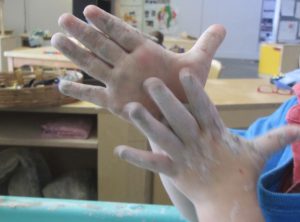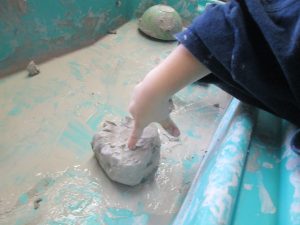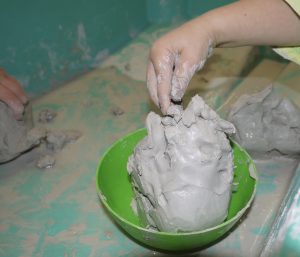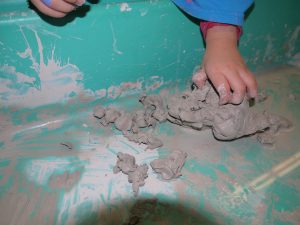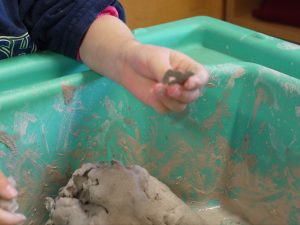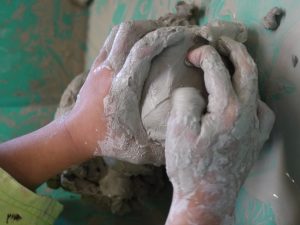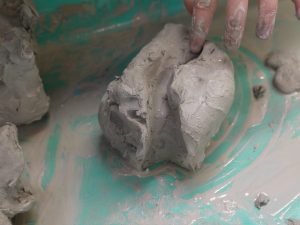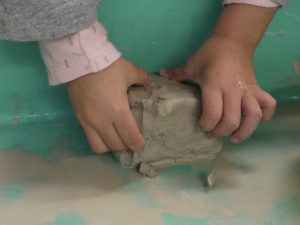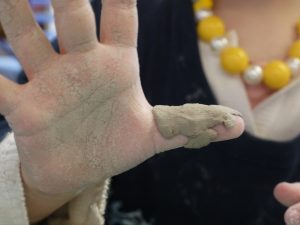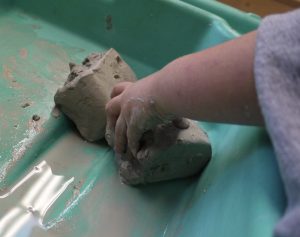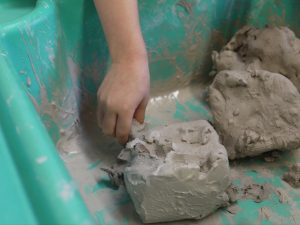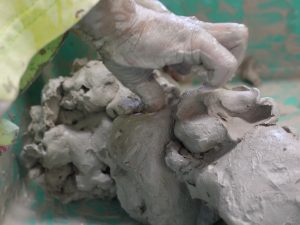We have noticed an interest in tools within the studio. The children have investigated:
Hammers to pound golf tees into a pumpkin
Phillips and flathead screwdrivers to tighten screws
Hexagonal screwdrivers to undo bolts
Triangle screwdrivers to connect Duplo pieces
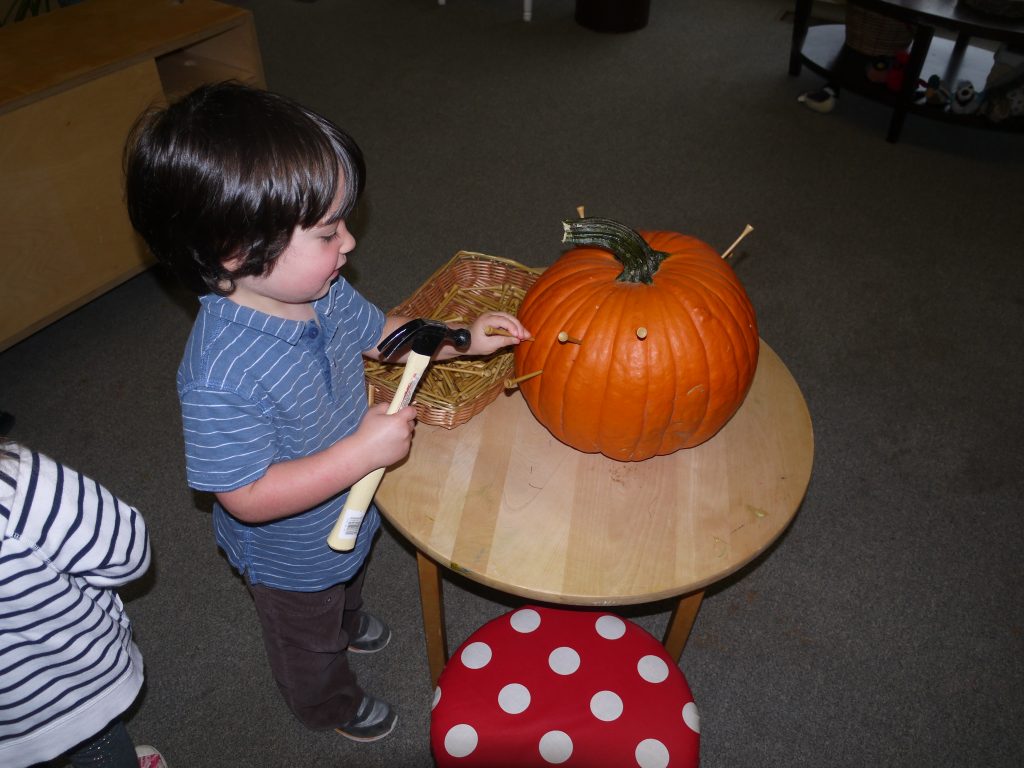
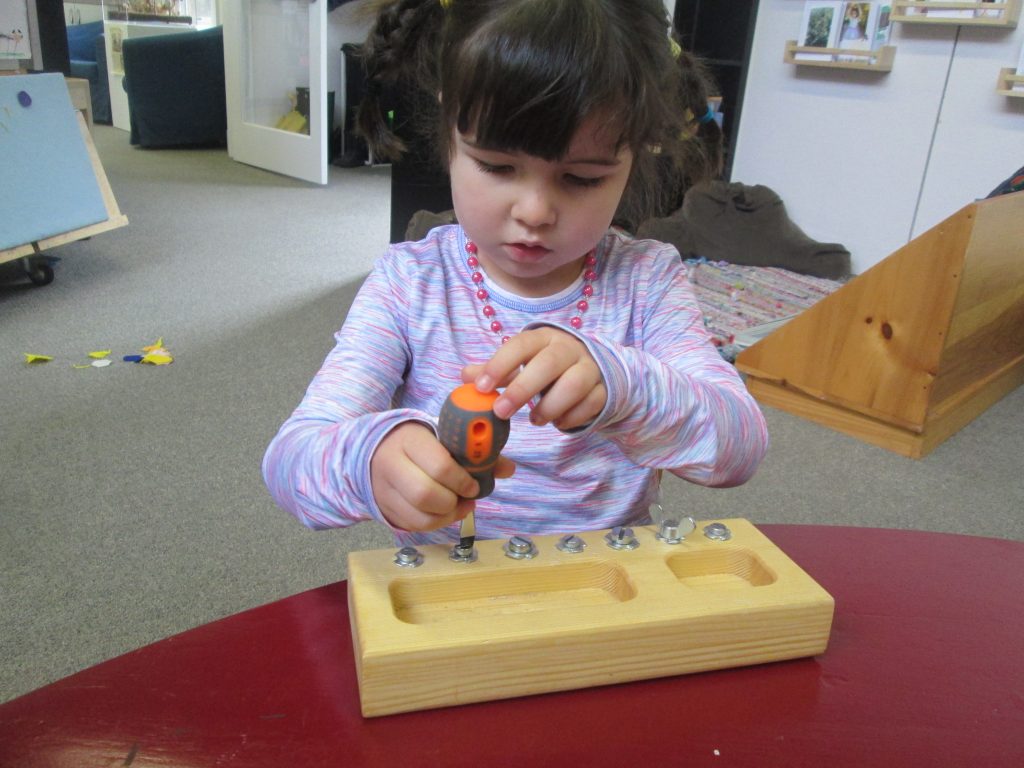
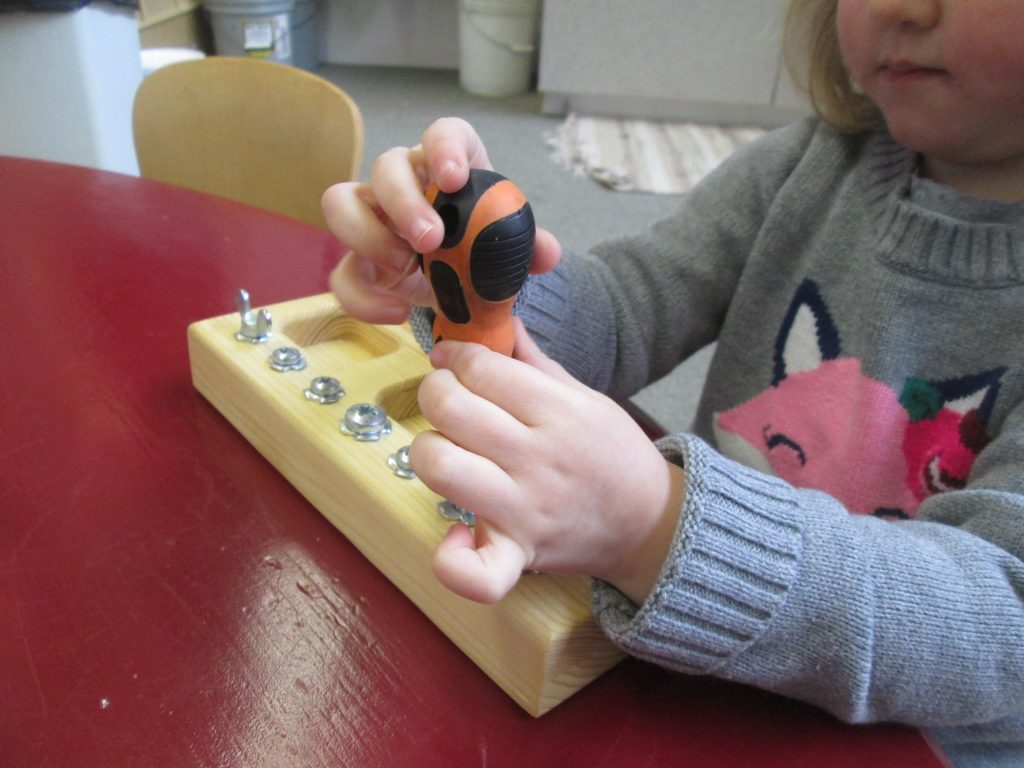
BUT WHAT IF THEY USED THEIR HANDS AS TOOLS? COULD THEIR HANDS BE A TOOL?
To this end we added clay to the sensory table and posed the question.
What are your fingers doing?
Listening carefully we heard a whole range of vocabulary around using their hands in clay.
crushing the clay
connecting the connector
being a hammer
making a hole
making a ball
ripping it up
pushing it
flattening it
poking it
twisting it
pulling it
rolling it
pinch it off then rub it
being a drill
banging it


